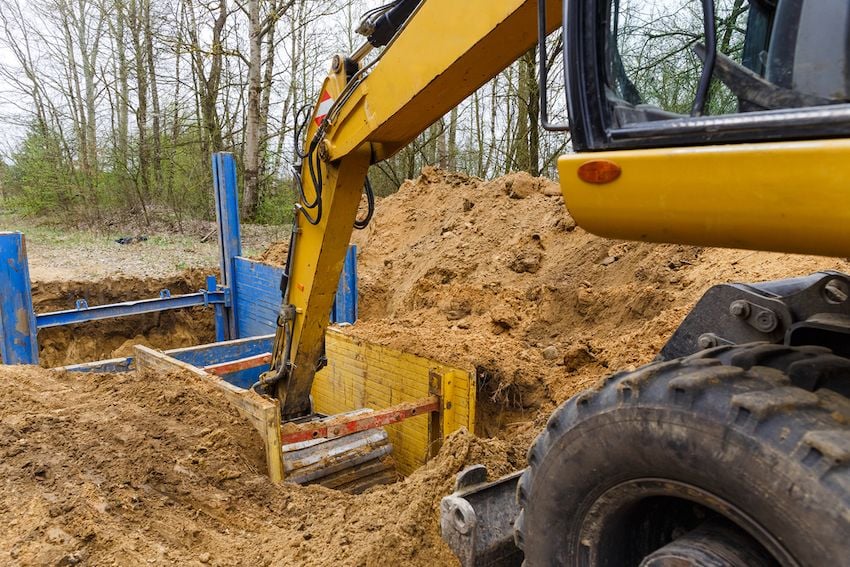Electrical work is highly hazardous. Workers are exposed to electricity and are at risk of falling, so being aware of protective measures for common electrical safety hazards can be a matter of life and death.
Exposure to electricity resulted in 166 worker fatalities in 2019, according to the Bureau of Labor Statistics (BLS). This is a 3.75 increase from 2018 and serves as the highest number of deaths in this category since at least 2015. This shows that taking electrical lineman safety seriously at each worksite cannot be emphasized enough. Read on for a look at several electrical-related safety issues highlighted by the Occupational Safety and Health Administration (OSHA), as well as tips to help your team avoid these worksite threats.
Look: The Future of Worker Safety in Utilities
4 common electrical safety hazards
1. Electrocution
Working with both overhead and buried power lines poses a serious safety hazard, due to the high voltage they carry. The main risk associated with this work is electrocution.
According to the Canadian Centre for Occupational Health and Safety (CCOHS), having direct contact to exposed energized conductors or circuit parts can disrupt normal electric signals between the brain and muscles, leading to a variety of serious health emergencies. For example, the heart could stop beating properly, breathing can stop, and muscles may spasm.
2. Falls
Working on overhead lines puts linemen at risk of falling. Anything from equipment mishaps to being startled can lead to a fall from a ladder, scaffold, or aerial bucket, according to CCOHS.
In 2012, a power line worker coming down from a utility pole fell nearly 30 feet to the ground when his pole climbers cut out of the pole, according to OSHA. He suffered fractured ribs, a fractured pelvis, fractured legs, and internal injuries that required 14 days of hospitalization.
Read: 7 Steps For Successful Safety Stand Downs
3. Electric shock
Setting up power lines, maintaining existing ones, and responding to natural disasters makes an electrical lineman susceptible to electric shock. This occurs when a worker makes direct contact with energized conductors or when electricity arcs from an exposed energized conductor or circuit part—such an overhead power line—through a gas like air to a person who is grounded, according to CCOHS.
4. Burns
When electricity meets the body, severe burns can happen. Three serious types of burns include:
- Thermal burns: Those from heat generated by an electric arc
- Flame burns: Those from materials that catch on fire from heating or ignition by electrical currents or an electric arc flash
- Contact burns: Those from being shocked that can burn internal tissues, while injuring just a small part of the outer layer of skin
Burn injuries can happen when workers least expect them. For example, in 2012 an electric utility worker installing replacement batteries at a substation was injured when a battery cable fell onto the terminals on one of the installed batteries, according to OSHA. An electrical fault occurred, and he suffered second- and third-degree burns, which required him to be hospitalized for several days and undergo multiple surgeries.
Check out: Why Utilities Should Hold Mental Health Safety Stand Downs
4 electrical lineman safety tips
1. Carefully assess each job site
Working as an electrical lineman involves performing many of the same tasks at different job sites, but it’s essential to remember no two assignments are identical. Taking the time to thoroughly assess each job site before starting work is a key component of worker safety.
No matter how urgent the assignment is, a lineman should never start work before every safety hazard is identified. Going into the job informed allows them to create a plan to work with or around the risks present, which greatly decreases the chance of injury.
2. Use personal protective equipment
Wearing personal protective equipment (PPE) when working with electricity is one of the most important electrical lineman safety practices. To provide adequate protection from safety hazards, PPE must be safely designed and constructed, maintained in a clean and reliable fashion, and fit comfortably. If PPE does not fit properly, it can endanger electrical lineman safety, because it may not be able to safeguard as intended.
Read: Safety Leading and Lagging Indicators: What’s the Difference?
3. Use cover-up equipment
Cover-up equipment prevents workers from inadvertently making contact with energized equipment and also prevents energized conductors from accidentally contacting the grounded surface of a pole or crossarm. Injuries are much more likely when cover-up equipment is not used, or when there is not enough cover-up equipment and workers must move it during a job. Therefore, workers should not start a job until the proper amount of cover-up equipment is available.
4. Never assume grounded systems are safe
It’s easy to assume all grounded systems are safe, but induction—a current in a conductor caused by a nearby electromagnetic field—is always a risk. Even properly grounded systems can quickly shift from safe to dangerous, due to extreme conditions or rough treatment.
There are several steps workers can take to avoid this safety hazard, including visually inspecting all equipment before use and using double-insulated tools and equipment. Include this information in your lineman safety training, so workers are aware of this safety hazard and know how to handle it.
Electrical line work is rewarding, but it comes with many serious safety risks. You can prevent serious injuries and fatalities by being aware of the most common issues associated with this line of work and taking proper protective measures. Put safety first at every job, and never cut corners or start work without putting all necessary safeguards in place first.
For more on the topic of safety practices, check out “3 Ways to Improve Utility Worker Safety.”

